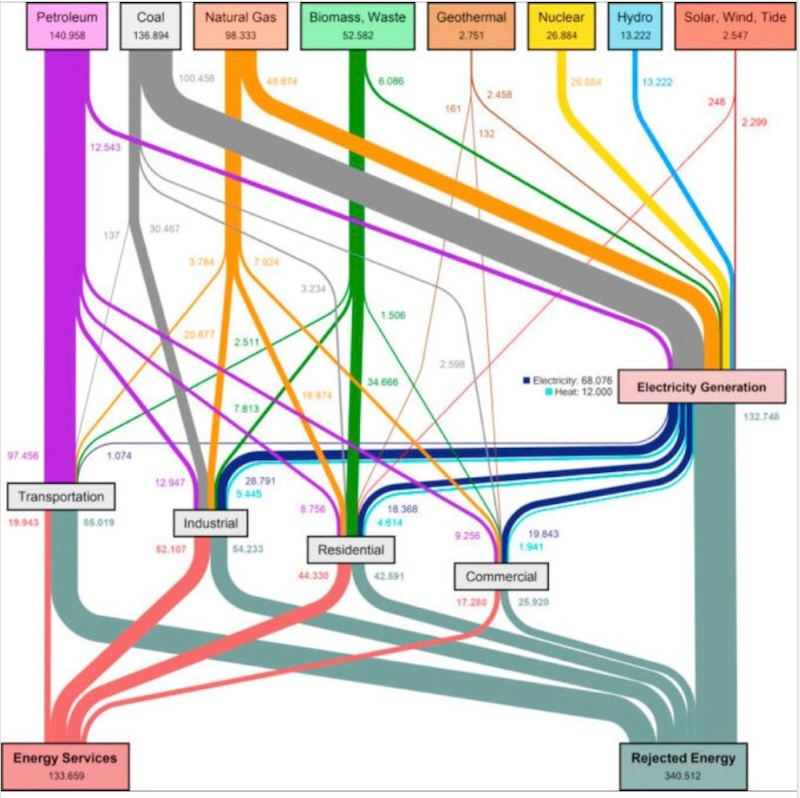On Chornobyl Anniversary, Time to Celebrate Canada’s Not-the-Nuclear Lobby
It’s been 38 years since the Chornobyl nuclear plant exploded in Ukraine. Now we’re coping with an explosion of hype and exaggeration about new nuclear technologies that still aren’t ready to deliver.
To cope with the routine spin and exaggeration we keep seeing from the nuclear energy lobby, it helps to take an over-sized, over-priced, over-hyped technology and bring it down to something more…everyday.
So imagine that you’re setting out to buy a new toaster, and your online sleuthing brings you to an offer that looks too good to be true.
It uses the latest technology to deliver the perfect, golden brown slices that you love, every single day.
It runs safely, with three independent safety systems to make sure your toast never catches fire and the wiring never shorts out.
It’ll run reliably for decades, with minimum maintenance and no risk.
It leaves behind a steady accumulation of crumbs and turns them into a weird, toxic sludge. But you needn’t fret about that—the toaster’s storage compartment can hold the waste for decades, some of the world’s best scientists are on the case (for a toaster? seriously??), so the problem is bound to be solved by the time you have to deal with it.
And the latest version has been scaled down from the big, industrial units in commercial kitchens so that it fits neatly on your counter (as long as you have a very large counter). Call it a Small Modular Toaster.
Are you sold yet?
But All You Wanted Was a Toaster
At first, you weren’t thinking of buying anything too new-fangled—you were just looking for a toaster. But not to worry—this industry has been around since the 1940s, and they seem pretty proud of their track record. Yet they’re offering something new and exciting, so they must be keeping up with the times.
Your very own Small Modular Toaster will cost a lot more than you planned to pay, but look at everything you get in return!
And it must all be true, because an army of lobbyists and publicists has been telling you so for years.
Until you dig a bit deeper. Then it turns out this branch of the toaster industry has rarely if ever delivered a product on time or on budget.
They’ve had problems with sludge leaks.
Their supply chains produce hideous, deadly cancers in the workers who search out the components they depend on, and hazardous traces of those components sometimes turn up in peoples’ basements.
And the manufacturer has never produced toasters in enough volume to really learn how to do it well and start driving down unit costs. (Okay, this is where the analogy to a toaster maker gets a bit thin.)
But you’ve already spent too much time on this purchase, so you put your doubts aside and dive in to order your very own Small Modular Toaster. That’s when you find out it won’t be available until 2030. Or maybe 2035. And not at all without massive government subsidies to get the technology built.
Welcome to the world that a long-ago critic dubbed Nukenomics, where the health and environmental impacts are always understated, the costs always spin out of control, the next “renaissance” in new technology is always just around the corner, and nearly a century of development hasn’t been enough to find a permanent solution for waste that remains toxic for up to 240,000 years—or figure out how to prevent nuclear fuel from being diverted into weapons of nuclear war.
Now you know why the Not-the-Nuclear Lobby is back in Ottawa this week with a series of activities that includes film and theatre events, a community forum, meetings with MPs, and a lunch & learn Wednesday.
From Chornobyl to Zaporizhzhia: A Scary Anniversary
Friday, April 26 was the 38th anniversary of the nuclear power plant disaster at Chornobyl, Ukraine, and as good a time as any to focus in on the very bad deal we accept with every nuclear plant we build.
At the dawn of the industry in the 1950s, nuclear proponents claimed their nifty, new technology would deliver energy that was safe, clean, and “too cheap to meter”—a phrase the industry has come to regret, and has brought it eyerolls and mockery ever since. There has been some suggestion that U.S. Atomic Energy Commission Chair Lewis Strauss was referring to nuclear fusion, not fission, when he made the outlandish promise, but fusion isn’t doing so well, either.
Through a climate lens, all you need to know is that neither technology is ready to boost production or drive down costs in time to deliver the emission reductions we need by 2030 or 2035. That’s the time frame that matters if the question is whether humanity can get greenhouse gas emissions under control and avert the worst impacts of the global climate emergency.
Fortunately, while the nuclear industry is still struggling to get a first small modular reactor built, and a usable nuclear fusion reactor is at minimum decades away, the options we already have in our hands—energy and process efficiency (see the chart below this post), solar, wind, and energy storage—are practical, affordable, and ready for prime time.
But the nuclear industry isn’t just incapable of keeping its over-hyped promises. It’s also deeply dangerous, as we’ve seen at Chornobyl, Fukushima, Three Mile Island, and with a host of smaller leaks and failures over the years and decades. Here’s a capsule account of the Chornobyl disaster, posted two years ago by the U.S. embassy in Georgia—an office that would presumably be prone to measured, diplomatic language, even in a moment when they were looking to discredit Vladimir Putin and his regime:
In 1986, when the accident occurred, it spread a radioactive cloud over large parts of the Soviet Union—territory that now includes Belarus, Ukraine, and Russia—as well as Central and Eastern Europe. Nearly 8.4 million people in the three countries were exposed to significant levels of radiation, the U.N. says.
The Soviet government acknowledged the need for international assistance only in 1990 and hid many details from the public.
A Nuclear Plant in a War Zone
This is also an industry that apparently had zero capacity to foresee the risks of locating an operating nuclear power plant in a war zone—because if anyone rational had thought that through, no nuclear plants would ever have been built. The risk of a catastrophic accident at Zaporizhzhia, Europe’s largest nuclear plant, has produced reactions ranging from anxiety to terror since Russia invaded Ukraine more than two years ago.
The operating status of the plant has been increasingly tenuous since Putin’s invasion, most recently after military drones hit the site earlier this month.
“Such reckless attacks significantly increase the risk of a major nuclear accident and must cease immediately,” said International Atomic Energy Agency Director General Rafael Mariano Grossi, who has been vocal throughout the crisis but of course has no power beyond moral suasion to enforce his declarations. “As I have repeatedly stated,” he added, “no one can conceivably benefit or get any military or political advantage from attacks against nuclear facilities. Attacking a nuclear power plant is an absolute no go.”
Except that an eventual calamity at Zaporizhzhia would be no accident. Not because anyone would likely trigger it on purpose (though with Putin, ya never know), but because the risk was 100% foreseeable, therefore 100% preventable.
Small Modular Reactors: New Tech, Same Problems
But wait!, you say—Zaporizhzhia is so dangerous because it’s the biggest nuclear plant in Europe, a throwback the industry is trying to leave behind with its embrace of small modular nuclear reactors (SMRs). So how’s that going so far?
Not nearly as well as you would expect from reading industry press releases, listening to rapturous support from provincial premiers, or following the trail of federal subsidies on offer to get the technology up and running. Independent analysis suggests SMRs will produce more radioactive waste, not less, than the larger designs they’re meant to replace, and the cost calculations aren’t giving the industry the arguments it needs, either.
In a post last summer for Undark, Berlin-based energy and climate journalist Paul Hockenos acknowledged a “step in the right direction” as most jurisdictions (though apparently not Ontario) abandon the old generation of gigawatt-scale nuclear plants that produce electricity at up to nine times the cost of utility-scale solar and onshore wind, and can take well over a decade to build.
But like their overgrown cousins, “SMRs are just as likely to face similar delays and cost overruns,” Hockenos wrote, and “all of them are proving even more expensive per kilowatt than traditional reactors”—which explains why “in the U.S., and everywhere else in the world, nuclear policy relies heavily on subsidies to be economically competitive.”
Hockenos wrote those words before the failure of the NuScale SMR project in Utah raised concerns about the cost-competitiveness of similar ventures in Canada.
“Private investors in Utah forced NuScale to divulge financial information regarding the cost of electricity from its proposed nuclear plant,” and “cost became the deal-breaker,” Gordon Edwards, president of the Canadian Coalition for Nuclear Responsibility, told The Energy Mix at the time. “Publicly-owned utilities in Canada are not similarly accountable. The public has little opportunity to ‘hold their feet to the fire’ and determine just how much electricity is going to cost, coming from these first-of-a-kind new nuclear reactors.”
An ‘Incurable Attack of Market Forces’
As far back as 2019, clean energy pioneer Amory Lovins warned that a stumbling global nuclear industry was “dying of an incurable attack of market forces.” There’s little to suggest that the outlook for SMRs has improved since. Meanwhile, renewable energy costs continue to fall, and the International Energy Agency projected last Thursday that the energy storage systems that enable smaller, more distributed renewables are in for a 40% price drop by 2030—on top of the 90% reduction we’ve already seen.
“Batteries are changing the game before our eyes,” declared IEA Executive Director Fatih Birol.
Storage will still need to increase deployment six-fold to enable countries’ 2030 decarbonization targets. But that’s an argument for doubling down on the options we already know, that are already working for us, rather than relying on a technology that mainly still exists on PowerPoint slides, delivered by an industry that has rarely kept its cost or delivery promises.
The Canadian nuclear industry gets a free ride in many ways, not least the limited attention it receives from clean energy advocates. The community itself is split (needlessly split, I would argue) on whether nuclear in any form is a necessary or realistic decarbonization option. But those who ended up working on climate change by way of the non-nuclear lobby have had precious little time or attention to divert from the fight to phase down fossil fuels, accelerate the shift to efficiency and renewables, and address the resulting equity and transition issues in a way that no energy industry ever has in the past.
We can do something about that, at least briefly, when the Not-the-Nuclear Lobby comes to town. I’m really looking forward to moderating their lunch & learn Wednesday, and only wish we could all do this more than once a year.
Mitchell Beer traces his background in renewable energy and energy efficiency back to 1977, in climate change to 1997. Now he and the rest of the Energy Mix team scan 1,200 news headlines a week to pull together The Energy Mix, The Energy Mix Weekender, and our weekly feature digests, Cities & Communities and Heat & Power.
Chart of the Week

EXCLUSIVE: Canadian Pension Fund Piles on Risk as California Cracks Down on Idle Oil Wells
‘Silent Killer’: Canadian Cities Scramble to Prevent Heat-Related Deaths
Banks’ Poor Climate Performance Shows Need for Federal Legislation: Op Ed
China’s CATL Unveils 1.5M-km EV Battery, Long-Duration Storage Unit
Duelling Letters Urge Ottawa to Finish Sustainable Finance Rules, With or Without Fossil Fuels
Quebec Explores ‘Game-Changer’ Urban Solar with Call for Small, Local Projects
Federal Budget to Include Revamped Greener Homes Grant
$10M in Microgrid Grants Deliver Resilience to Native American Communities
‘Right-Size’ Heat Pump Training Aims To Boost Efficiency Gains
Ottawa to force banks to identify carbon rebate by name in direct deposits (The Canadian Press)
'A powerful economic force': How clean energy delivered 10% of global economic growth last year (BusinessGreen)
In Wyoming, a Tribe and a City Pursue Clean Energy Funds Spurned by the Governor (Inside Climate News)
Fossil fuels fall to record-low 2.4% of British electricity (Carbon Brief)
South Korea Set to Deliver 500th LNG Ship to Overseas Market (Rigzone)
Vietnam farmers are revolutionizing how they grow rice in bid to save the planet (The Independent)
Pakistani province issues a flood alert and warns of a heavy loss of life from glacial melting (The Associated Press)
Mosquito-borne diseases spreading in Europe due to climate crisis, says expert (The Guardian)
Drought extends to almost 80% of Mexico; 10 states with 100% of municipalities affected (Excelsior)
Alaska refuge drilling could threaten polar bears with ‘lethal’ oil spills (Carbon Brief)
A bright day in the history of solar power (The Times/UK)







